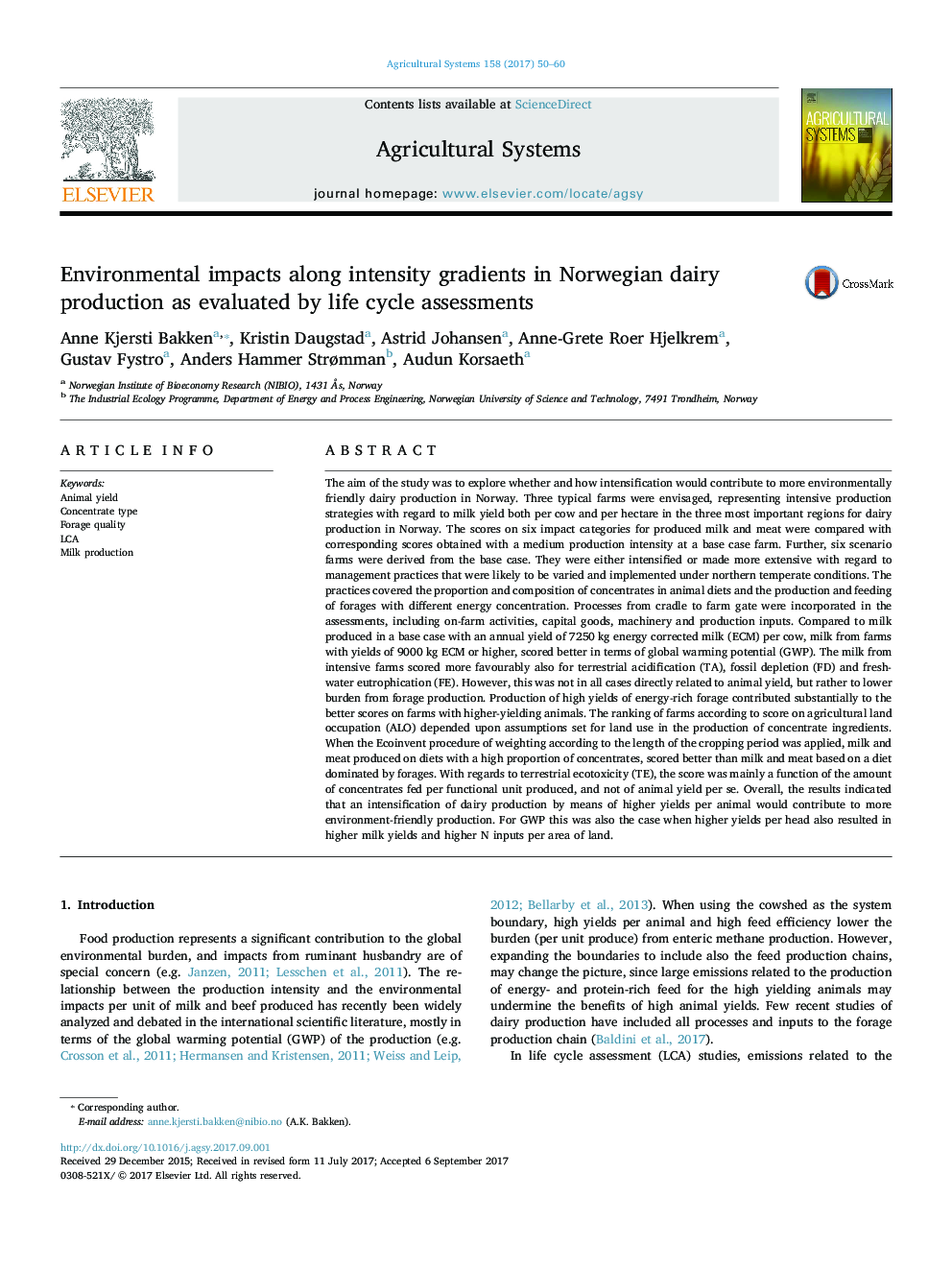| کد مقاله | کد نشریه | سال انتشار | مقاله انگلیسی | نسخه تمام متن |
|---|---|---|---|---|
| 5759680 | 1623212 | 2017 | 11 صفحه PDF | دانلود رایگان |
عنوان انگلیسی مقاله ISI
Environmental impacts along intensity gradients in Norwegian dairy production as evaluated by life cycle assessments
ترجمه فارسی عنوان
اثرات زیست محیطی در طول شیب شدت در تولید لبنیات نروژی به وسیله ارزیابی های چرخه زندگی ارزیابی شده است
دانلود مقاله + سفارش ترجمه
دانلود مقاله ISI انگلیسی
رایگان برای ایرانیان
موضوعات مرتبط
علوم زیستی و بیوفناوری
علوم کشاورزی و بیولوژیک
علوم کشاورزی و بیولوژیک (عمومی)
چکیده انگلیسی
The aim of the study was to explore whether and how intensification would contribute to more environmentally friendly dairy production in Norway. Three typical farms were envisaged, representing intensive production strategies with regard to milk yield both per cow and per hectare in the three most important regions for dairy production in Norway. The scores on six impact categories for produced milk and meat were compared with corresponding scores obtained with a medium production intensity at a base case farm. Further, six scenario farms were derived from the base case. They were either intensified or made more extensive with regard to management practices that were likely to be varied and implemented under northern temperate conditions. The practices covered the proportion and composition of concentrates in animal diets and the production and feeding of forages with different energy concentration. Processes from cradle to farm gate were incorporated in the assessments, including on-farm activities, capital goods, machinery and production inputs. Compared to milk produced in a base case with an annual yield of 7250Â kg energy corrected milk (ECM) per cow, milk from farms with yields of 9000Â kg ECM or higher, scored better in terms of global warming potential (GWP). The milk from intensive farms scored more favourably also for terrestrial acidification (TA), fossil depletion (FD) and freshwater eutrophication (FE). However, this was not in all cases directly related to animal yield, but rather to lower burden from forage production. Production of high yields of energy-rich forage contributed substantially to the better scores on farms with higher-yielding animals. The ranking of farms according to score on agricultural land occupation (ALO) depended upon assumptions set for land use in the production of concentrate ingredients. When the Ecoinvent procedure of weighting according to the length of the cropping period was applied, milk and meat produced on diets with a high proportion of concentrates, scored better than milk and meat based on a diet dominated by forages. With regards to terrestrial ecotoxicity (TE), the score was mainly a function of the amount of concentrates fed per functional unit produced, and not of animal yield per se. Overall, the results indicated that an intensification of dairy production by means of higher yields per animal would contribute to more environment-friendly production. For GWP this was also the case when higher yields per head also resulted in higher milk yields and higher N inputs per area of land.
ناشر
Database: Elsevier - ScienceDirect (ساینس دایرکت)
Journal: Agricultural Systems - Volume 158, November 2017, Pages 50-60
Journal: Agricultural Systems - Volume 158, November 2017, Pages 50-60
نویسندگان
Anne Kjersti Bakken, Kristin Daugstad, Astrid Johansen, Anne-Grete Roer Hjelkrem, Gustav Fystro, Anders Hammer Strømman, Audun Korsaeth,
